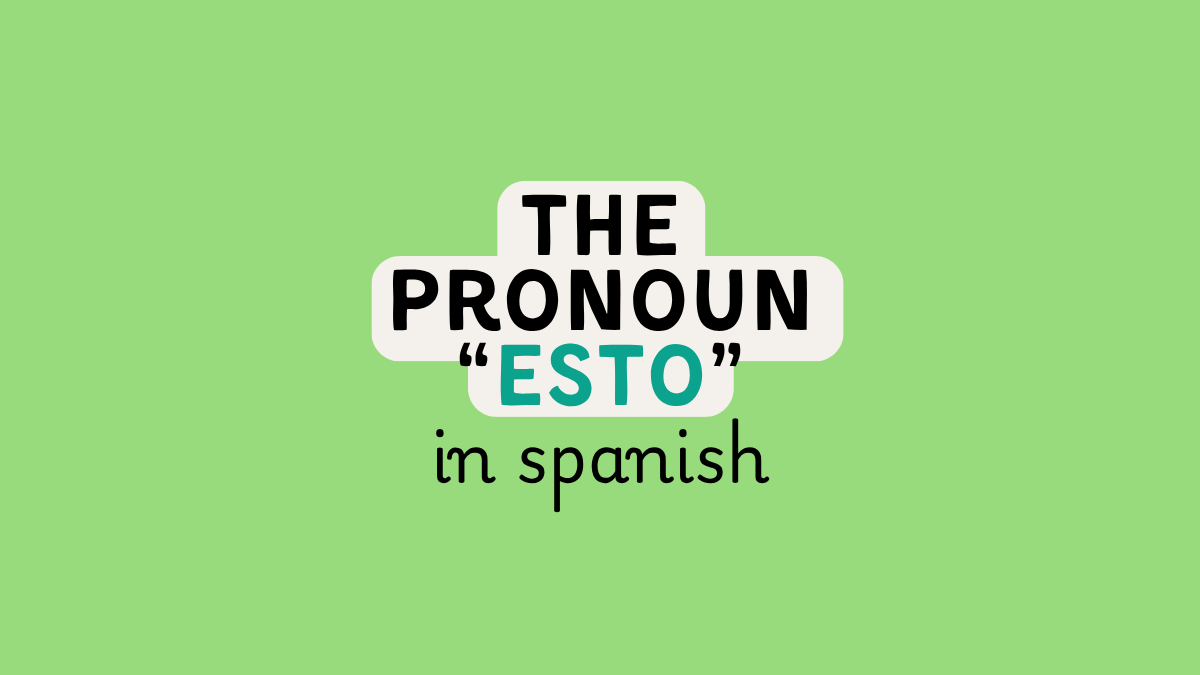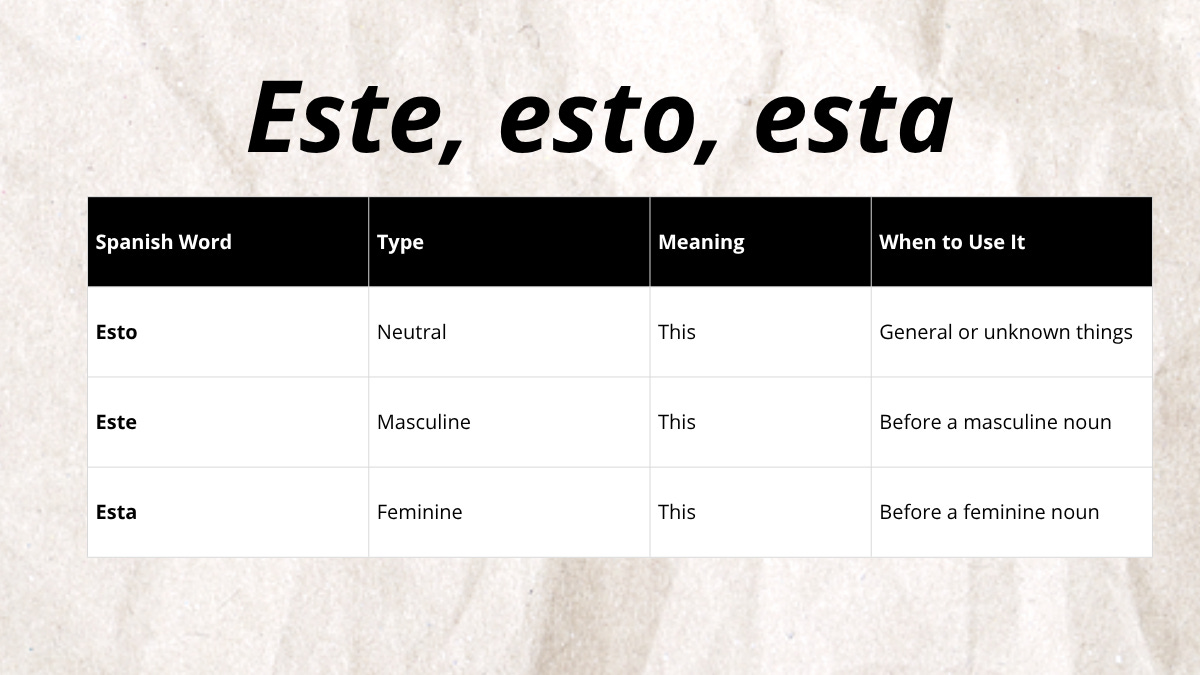The Spanish Pronoun “Esto”
When learning Spanish, you’ll often hear the word “esto.” It’s a small word, but very useful in everyday conversations. In this A1-level guide, we’ll explain what “esto” means, how to use it, and how it’s different from other similar words like “este” or “esta.”
What Does “Esto” Mean?
The word “esto” is a neutral demonstrative pronoun in Spanish. It usually means “this” in English, and it's used to refer to something that is close but not specifically named — often an idea, a situation, or an unknown object.
When to Use “Esto”
Use “esto” when:
You're referring to something unspecified
You're talking about a general idea
The gender of the noun is unknown or not mentioned
Common Examples
✅ Talking about an idea or situation:
Spanish: ¿Qué es esto?
English: What is this?
Spanish: Esto es muy difícil
English: This is very hard
Spanish: No entiendo esto
English: I don’t understand this
✅ Reacting to something just said or seen:
Spanish: ¡Esto es increíble!
English: This is amazing!
Spanish: ¿Esto es para mí?
English: Is this for me?
Important: "Esto" vs. "Este" vs. "Esta"
🔹 Example:
Este libro (this book – masculine)
Esta casa (this house – feminine)
Esto es importante (this is important – general idea)
Quick Grammar Tip
Esto is never used before a noun. It stands alone.
If you want to say “this book,” you say “este libro” (not “esto libro”).
Final Thoughts
The pronoun “esto” is simple but powerful. It helps you talk about ideas or unknown things without needing to know the gender of the noun. Practice using “esto” in short sentences and you’ll feel more confident speaking Spanish every day!
🚀 Want to Learn More?
Unlock exclusive tips, tutorials, and behind-the-scenes content!
🎥 Follow me on YouTube & 📸 Instagram — let's grow together!





